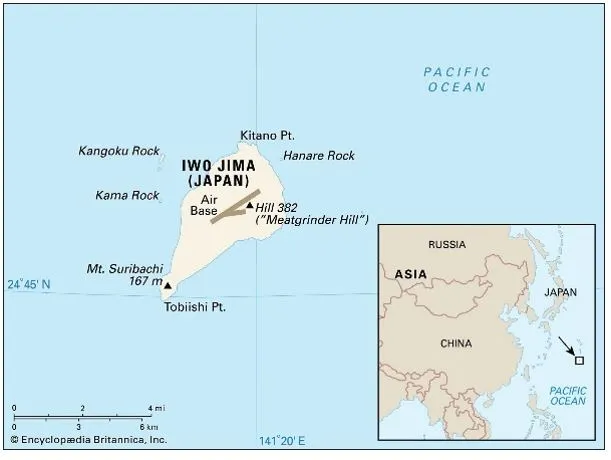

8th April 2025 (14 Topics)
Mains Issues
Context
As India approaches 2026, the freeze on Lok Sabha seat redistribution (based on population) — enforced since 1971 — is set to end. This has triggered intense debate, especially in southern states, over fears of losing political representation in Parliament.
What is the issue (Seat freeze since 1971)?
- ‘Democracy’ means ‘rule or government by the people’. It follows that the government is elected by a majority with the broad principle of ‘one citizen-one vote-one value’.
- The number of seats in the Lok Sabha based on the 1951, 1961 and 1971 Census was fixed at 494, 522 and 543, when the population was 36.1, 43.9 and 54.8 crore respectively.
- According to Articles 81 and 82, Lok Sabha seats should be revised after every Census.
- However, to encourage population control, Parliament froze seat allocation based on the 1971 Census — extended till 2026.
- This was done through the 42nd Amendment Act till the year 2000 and was extended by the 84th Amendment Act till 2026.
- This helped avoid punishing states (mainly southern) that that had effectively controlled population growth.
- However, it led to massive population imbalance.
- Population has grown unevenly since 1971.
- Northern States (e.g., UP, Bihar, MP, Rajasthan) saw rapid growth.
- Southern States (e.g., Kerala, Tamil Nadu, Karnataka, Andhra Pradesh) managed to stabilize their populations.
- As per current projections (2026), if seats are redistributed based on population, northern states will gain significantly, and southern/smaller states may lose out in terms of representation.
- This raises concerns of northern domination and southern under-representation in Parliament. This disparity means northern states may gain disproportionate seats, while southern states get very little or none.
What is Delimitation vs Readjustment (Two proposal)?
- There are two proposals being debated:
- Delimitation = Redrawing of constituency boundaries (not increasing seats).
- Readjustment = Recalculation of total seats allotted to each state based on new population data (Article 82).
- In both cases, southern and smaller states like Kerala, TN, Punjab, and the Northeast would be at a disadvantage.
Violation of Federalism
- It potentially violate Federalism as,
- It may dilute the voice of states that succeeded in population control.
- It could shift political power unfairly to a few high-growth states.
- It creates tensions in centre-state relations and may lead to regional alienation.
Way Forward
The upcoming delimitation exercise involves a difficult balancing act between:
- Democratic principles (equal representation based on population), and
- Federal values (equal voice to all states regardless of size).
India must adopt a fair, sensitive, and inclusive approach that respects both numerical strength and policy success in population control.
Fact Box: Delimitation
|


Mains Issues
Context
India has declined to participate in the ASEAN-led effort to develop a joint response strategy against the reciprocal tariffs policy of former US President Donald Trump. New Delhi is instead prioritizing bilateral trade negotiations with Washington, signaling a strategic and competitive approach to trade diplomacy.
ASEAN’s Approach
- The United States announced “reciprocal tariffs” against all major trading partners
- Reciprocal tariffs refer to imposing the same level of tariffs on countries that impose high tariffs on US exports.
- Trump’s trade policy was based on the idea that the US should not allow countries to enjoy low-tariff access to its markets while they impose higher barriers on American goods.
- ASEAN member countries, particularly export-driven economies like Vietnam, Malaysia, and Thailand, have been disproportionately affected by such tariffs.
- ASEAN is considering a joint strategy to counter US pressure and negotiate collectively.
- However, this also reflects their own internal competition for US market access.
Why India is not joining ASEAN’s effort?
- Competitive Trade Interests: India sees ASEAN economies as direct competitors in sectors like textiles, electronics, and agriculture. Joining their bloc could undermine India’s own negotiating space.
- Bilateral Focus with the US: India is already engaged in bilateral trade agreement (BTA) talks with the US. On a recent visit, EAM S. Jaishankar and US Secretary of State Marco Rubio discussed fast-tracking the BTA, indicating high-level political will.
- Global Diversification Strategy: India is also pursuing Free Trade Agreements (FTAs) with:
- EU, UK, Australia, New Zealand
- Exploring pacts with Latin American and West Asian
- The goal is to diversify export markets and reduce over-dependence on a few countries.
Strategic Implications for India
- Maintaining Autonomy in Trade Policy: India prefers bilateral arrangements that allow for customized benefits, rather than multilateral pressure groups.
- Geoeconomic Positioning: By independently negotiating with the US and other major economies, India aims to strengthen its leverage in global trade.
- Indo-Pacific Dynamics: India’s trade policy is part of a broader strategic vision for the Indo-Pacific, balancing both security and economic interests.

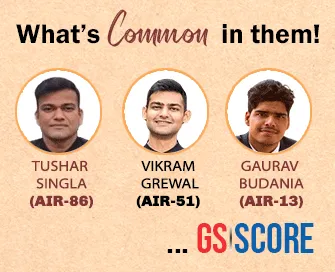
Mains Issues
The Indian stock markets suffered a sharp crash due to global tensions triggered by US President Donald Trump’s tariff hikes and retaliatory steps by China. This has been one of the steepest intraday drops since the COVID-19 pandemic crash of 2020.
What is Indian Stock Market?
- The Indian Stock Market is a financial market wherein many securities, including equities, bonds, ETFs and derivatives, trade on exchanges at prices determined by demand and supply.
- The Securities Exchange Board of India (SEBI) regulates the Indian stock markets.
- There are two major stock markets in India-
- National Stock Exchange of India (NSE): The NSE was established in 1992. It offers investments in equities, indices, initial public offerings, mutual funds, exchange-traded funds, and derivatives. Trading on the NSE occurs via electronic limit orders, which are matched through a trading computer. That allows for anonymity and transparency.
- Bombay Stock Exchange (BSE): The BSE is India's oldest and first functional stock exchange in Asia. It was established in 1875 and is headquartered in Mumbai. When the stock exchange started, it followed a floor trading system. Since then, it has advanced. Today, financial transactions on the BSE are done through an electronic trading system.
- The share market is an organised, regulated and centralised forum that brings together investors and companies. Its primary purpose is to raise finances for business expansion through the sale of shares.
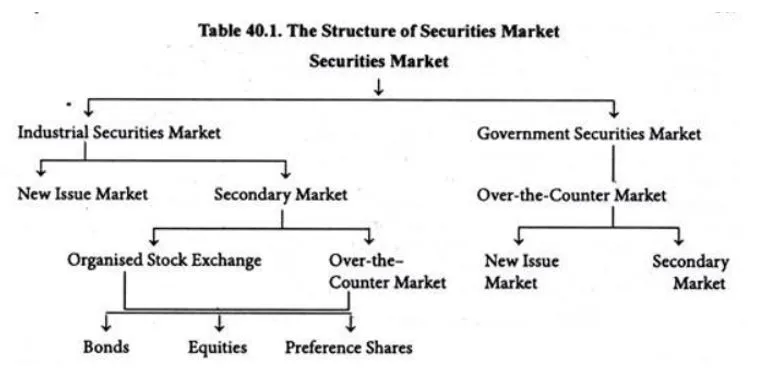
Black Monday
|


Prelims Articles
Context
Japan's Emperor Naruhito and Empress Masako made a rare visit to the tiny Pacific island of Iwo Jima to mark the 80th anniversary of the end of World War II.
The Battle of Iwo Jima (1945)
- Duration: February 19 to March 26, 1945.
- Operation Objective: To seize the island and use it as a base for bombing mainland Japan.
- Forces Involved (Combatants):
- United States: Around 70,000 Marines, supported by 450 naval ships, Army units, and Navy Seabees (combat engineers).
- Imperial Japan: Approximately 21,000 soldiers, deeply entrenched in bunkers and tunnels.
- Key Events:
- Feb 23, 1945: American Marines raised the U.S. flag atop Mount Suribachi, symbolizing a major milestone in the battle.
- US Casualties: Over 25,000, including 6,800+ deaths.
- Japanese Casualties: Nearly all 21,000 soldiers killed; only 216 taken prisoner.
About Iwo Jima
Fact Box: World War II (1939-1945)
|


Prelims Articles
Context
Israel has dramatically expanded its footprint in the Gaza Strip since relaunching its war against Hamas last month. It now controls more than 50% of the territory and is squeezing Palestinians into shrinking wedges of land.
Where is Gaza?
- The Gaza Strip is a small coastal territory located along the Mediterranean Sea.
- It is around 40 km long and 5 to 12 km wide.
- It borders Israel to the east and north, Egypt to the southwest, and the Mediterranean Sea to the west.
- Gaza is densely populated, with over 2 million Palestinians living there.
- Earlier Situation:
- Before the recent conflict, Israel maintained a narrow buffer zone—roughly 1 km wide—along Gaza’s eastern border.
- This area had several Palestinian towns and villages, fertile farmland, and was crucial for local food production.
- Though access was often restricted, many Palestinians still lived and farmed close to this zone.
- What has changed now?
- After the latest phase of the conflict resumed in late 2023, Israel began expanding this buffer zone significantly.
- As of now:
- The buffer zone has been expanded to up to 3 km in some areas.
- It is estimated that over 50% of Gaza’s land is now controlled or inaccessible due to Israeli military operations.
- Areas like northern Gaza, parts of central Gaza, and surroundings of Khan Younis have seen heavy destruction.
- Israel also controls buffer zones in Lebanon and the Golan Heights (Syria).
- Proposals have been made to split Gaza into different zones—like the Netzarim Corridor (already active) and a proposed Morag Corridor in the south—to divide Palestinian regions further.
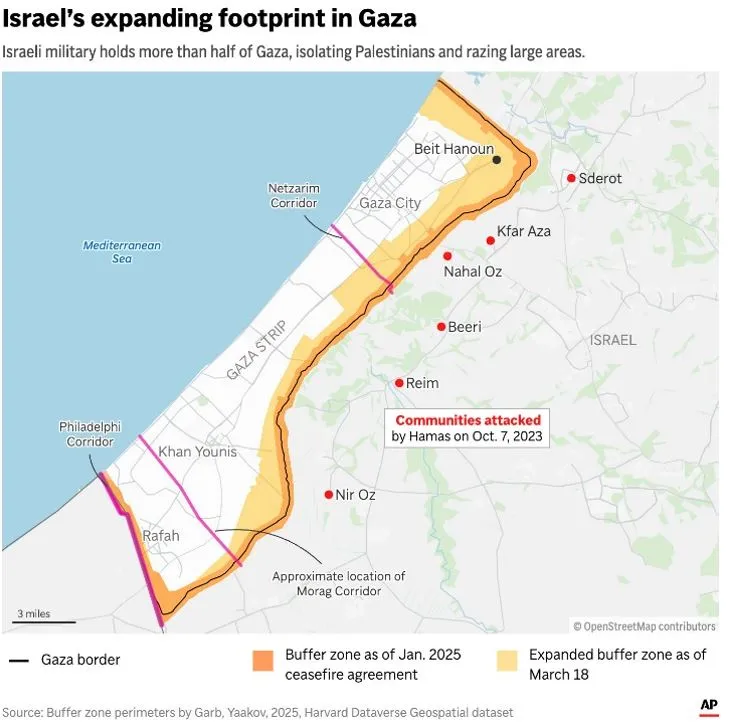

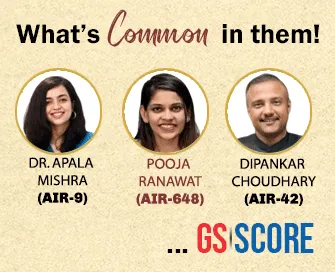
Prelims Articles
Context
The Supreme Courts of India and Nepal signed a Memorandum of Understanding (MoU) to enhance judicial cooperation. This marks a significant step in strengthening bilateral legal and constitutional ties between the two neighbouring democracies.
Key Highlights of the MoU
- The agreement provides a structured framework for collaboration through:
- Judicial exchanges
- Joint research initiatives
- Capacity-building programmes and training
- Seminars and official visits
- The initiative aims to address shared judicial challenges such as:
- Delays in justice delivery
- Limited access to justice
- Need for digitisation
- Protection of constitutional and fundamental rights
Mutual Learning in Jurisprudence
- India and Nepal have often drawn inspiration from each other’s judicial decisions.
- India's Supreme Court has previously acknowledged Nepal's judgments, particularly in cases related to privacy and LGBTQ+ rights.
- Similarly, Nepal has adopted key Indian constitutional doctrines like the Basic Structure Doctrine to guide its constitutional interpretation.
- Both countries share a commitment to democratic values, environmental rights, and evolving legal systems.

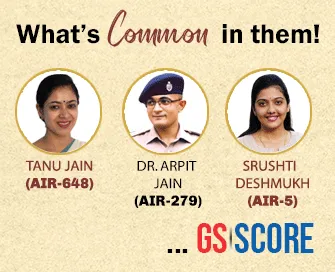
Prelims Articles
Context
On April 7, the world observes World Health Day as a way to raise awareness of important health challenges and motivate group efforts to address them.
About
- The idea for World Health Day originated from the first World Health Assembly, which was held in Geneva, Switzerland, in 1948.
- At this assembly, the WHO constitution was adopted, and the organisation was charged with the responsibility of promoting health and preventing disease worldwide.
- Theme 2025: "Healthy Beginnings, Hopeful Futures"


Prelims Articles
Context
The University Grants Commission (UGC) has issued new rules – called the “Recognition and Grant of Equivalence to Qualifications Obtained from Foreign Educational Institutions Regulations, 2025” – to make it easier and more transparent for students with foreign qualifications to get them recognised in India.
Key-highlights of the Regulations
- These rules explain how to get an equivalence certificate, which is a document confirming that a degree, diploma, or certificate earned abroad is considered equal to an Indian qualification.
- The equivalence certificate will be valid for:
- Admission to Indian higher education institutions (like universities and colleges)
- Jobs where a UGC-recognised qualification is required
- Research purposes in India
- But, the regulations do not apply to professional courses regulated by other statutory bodies like: Medicine, Pharmacy, Nursing, Law and Architecture. These areas continue to follow the norms of their respective councils (like NMC, BCI, COA, etc.).
- Qualifications to be Considered for Equivalence: For a foreign qualification to be accepted:
- The foreign institution must be recognised in its home country.
- The course must have similar admission and academic standards as those in India. This includes credit requirements, internship or thesis components, etc.
- The student must have completed the course according to the foreign institution’s norms.
- Even degrees from offshore campuses of foreign universities can be recognised, if they follow proper academic standards in both the host country and the institution’s home country.
- The regulations also apply to school-level qualifications (e.g. Class 12 from abroad) when applying for undergraduate courses in India — as long as the student has completed at least 12 years of schooling.
- Process for Getting an Equivalence Certificate: The UGC will set up an online portal where students can apply. A standing committee of experts will review each application.
- Current System: Until now, this job was mainly done by the Association of Indian Universities (AIU). The AIU is a registered body that issued equivalence certificates for foreign degrees for education and jobs in India.
- Now, the UGC will take over this role through a dedicated regulatory framework.
- This is the first time UGC has formally defined the process of recognising foreign qualifications through notified regulations.
- The move supports the National Education Policy (NEP) 2020, which promotes internationalisation of Indian education.


Prelims Articles
Context
Punjab has once again banned the sale and sowing of Pusa-44 paddy, a water-intensive rice variety, along with several other hybrid types, for the upcoming Kharif season. The ban is aimed at conserving groundwater, as the state faces serious risks of desertification in the next two decades due to over-extraction.
Why is Pusa-44 a problem?
- Pusa-44, also known as Peele Pusa, is a long-duration water-guzzler paddy variety.
- Issues:
- Takes longer to mature: Around 143 days, compared to 110-120 days for other varieties.
- Needs more water: Around 50 extra days of puddling, meaning more groundwater is used through tubewells.
- Poor milling quality: High moisture content, broken grains (up to 50%), and more straw make it less profitable.
- Harder to sell at MSP: Due to high moisture and broken grains, farmers struggle to get the minimum support price.
- Energy consumption: Last year, banning it saved electricity worth Rs 477 crore that would have powered water pumps.
- Most farmers are likely to shift to: PR-126 and PR-131. These varieties are shorter duration, less water-intensive, and preferred by rice millers.

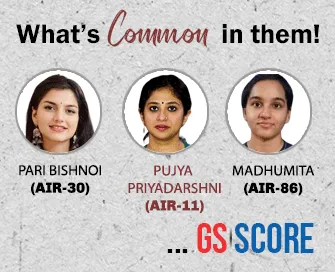
Prelims Articles
Context
India is preparing to release its first Military Space Doctrine within the next few months, marking a significant step in its defence strategy.
About
- The doctrine is being developed by the Defence Space Agency (DSA) and will be accompanied by a broader National Military Space Policy.
- India’s doctrine aims to define and develop military operations in space, particularly in key orbital zones —
- low Earth orbit (LEO)
- medium Earth orbit (MEO)
- geostationary orbit (GEO)
- These are vital for communications, surveillance, navigation, and targeting support.
- The doctrine will focus on how to protect Indian space assets, detect threats, and possibly conduct operations in disrupted or hostile space environments.


Prelims Articles
Context
Scientists have discovered that iron inside the Sun is far more opaque (blocks more light) than previous models predicted. This was found through new experiments using advanced technolog
Key Findings
- Iron in the Sun absorbs more energy (is more opaque) — up to 30% to 400% more than expected, depending on the type of radiation hitting it.
- The new measurements were done by recreating Sun-like conditions in a lab using X-rays, iron samples, and ultrafast detectors.
- These findings show that our theoretical models are underestimating iron's opacity, which means they may be miscalculating how energy moves through the Sun.
- This solves an old puzzle: earlier, scientists noticed a mismatch between models and actual solar data (like sound waves inside the Sun), but couldn’t explain it. This new research explains the mismatch.
|
Fact Box: About Sun
|


Editorials
Context
The Supreme Court strongly criticized the illegal demolition of residential properties by the Prayagraj Development Authority in Uttar Pradesh (2021), terming it a violation of due process and fundamental rights under Article 21, and ordered Rs 10 lakh compensation per affected person.
Judicial Stand on Extra-Legal Demolitions
- Violation of Due Process: The Court held that demolitions without prior show-cause notice or opportunity for hearing directly violate procedural safeguards guaranteed under Article 21.
- Assertion of Fundamental Rights: The SC reaffirmed that right to shelter is an integral part of right to life and dignity, and cannot be bypassed under the pretext of law enforcement.
- Condemnation of Arbitrary Punishment: The Court emphasized rule of law principles — no punishment without trial, presumption of innocence, and prohibition of collective or retaliatory actions.
Spread and Normalization of State Overreach
- Expansion Across States: Despite past judicial criticism, extra-legal demolitions have expanded beyond Uttar Pradesh to multiple BJP-ruled and opposition-ruled States like Punjab.
- Political Instrumentalization: Governments have used demolitions as punitive tools against political opponents or alleged criminals, circumventing established legal procedures.
- Social Endorsement of High-Handedness: Public approval of state overreach and vigilante-style justice reflects deteriorating commitment to constitutional governance and civil liberties.
Governance Challenges and Way Forward
- Erosion of Rule of Law: The rising frequency of custodial torture, encounter killings, and bulldozer justice underscores systemic weakness in institutional accountability.
- Mob Justice by State Machinery: State actions mimicking mob lynching tactics degrade democratic institutions and violate the constitutional mandate for fairness and justice.
- Need for Systemic Enforcement: Supreme Court directives must be uniformly implemented, ensuring state compliance, institutional checks, and deterrent consequences for illegal actions.
Practice Question:
Q. Extra-legal demolitions as a form of state action undermine the rule of law in India. Critically examine in light of recent judicial pronouncements and constitutional safeguards.


Editorials
Context
The Supreme Court is currently hearing a plea regarding the delay by the Telangana Legislative Assembly Speaker in deciding disqualification petitions against defecting MLAs from BRS to Congress, highlighting the persistent problem of partisan inaction under Tenth Schedule.
Pattern of Defections and Speaker Inaction
- Modus Operandi of Defections: States like Manipur, Maharashtra, and Telangana have witnessed large-scale post-election defections, often facilitated by deliberate Speaker inaction on disqualification petitions.
- Speaker’s Role and Bias: Speakers, usually aligned with the ruling party, have been accused of withholding decisions to provide cover for defecting MLAs, some even inducted as Ministers pending adjudication.
- Telangana Case Specifics: BRS filed disqualification petitions in March-April 2024; the Speaker notified them only in January 2025, prompting Supreme Court intervention questioning the delay.
Judicial Interventions and Constitutional Bench Rulings
- May 2023 Constitution Bench Judgment: The SC emphasized the need for Speaker impartiality and mandated decisions on defections to be taken within a reasonable period, without specifying a strict deadline.
- Follow-up Enforcement in Maharashtra: In October 2023, SC fixed a deadline for the Maharashtra Speaker, indicating judicial willingness to ensure compliance with its earlier ruling.
- 2020 Judicial Recommendation to Parliament: The SC proposed removing Speaker’s exclusive authority over defection matters and establishing an independent tribunal, but Parliament has not acted on the suggestion.
Structural Challenges and Democratic Implications
- Systemic Partisan Conflict: Speaker's position as a political appointee results in structural conflict of interest, undermining impartial adjudication under the anti-defection law.
- Lack of Political Will for Reform: Despite clear judicial directions and widespread misuse, no constitutional amendment has been made to reform defection adjudication mechanisms.
- Democratic Accountability Deficit: Widespread defections continue due to voter apathy and lack of electoral consequences for those who subvert party mandates, weakening democratic integrity.
Practice Question:
Q. The role of the Speaker in the adjudication of defection cases has come under repeated judicial scrutiny. Critically evaluate the need for institutional reforms in the implementation of the Tenth Schedule.


Editorials
Context
Indian stock markets saw a sharp fall exceeding 2.5% in key indices (Nifty 50 and Sensex) due to escalating global trade war concerns triggered by US President Donald Trump's unilateral tariff measures. This decline mirrors significant losses across global markets including the US, Asia, and Europe.
Global Market Impact
- US Market Crash: US stock markets lost over USD 6 trillion in value within two trading days, impacting major indices like the S&P 500, Dow Jones, Nasdaq 100, and Russell 2000.
- Asian Market Decline: Major Asian indices such as Nikkei 225 (-8%), TAIEX (-9.7%), Hang Seng (-13%), and SSE Composite (-7%) suffered significant losses, reflecting investor panic.
- European Market Reaction: Indices like the DAX (Germany), FTSE 100 (UK), CAC 40 (France) and STOXX600 were all trading with losses around 5%, with continued downward pressure predicted by US futures.
Underlying Causes of Market Fall
- Unilateral Tariffs by US: US President Trump imposed punitive tariffs globally, raising costs across industries without corresponding productivity gains, thus directly reducing corporate profits.
- Supply Chain Disruptions: Tariffs threaten the integrity of global supply chains, creating inefficiencies and raising uncertainty in production networks worldwide.
- Legal and Policy Uncertainty: Concerns over the legality, legislative backing, and sustainability of these tariffs persist, especially in absence of US Congressional approval, amplifying investor anxiety.
Implications for Indian Policymakers
- Short-term Optimism: Some view this as a temporary correction, with India's relatively lower fall indicating market resilience and potential buying opportunities.
- Long-term Strategic Shift: Others interpret this as a structural break in global trade, signaling the rise of protectionist policies and decline of multilateralism.
- Need for Self-Reliance: India may need to recalibrate trade policy, strengthen domestic manufacturing, and prepare to operate in an era of fragmented global trade norms.
Practice Question:
Q. Discuss the implications of unilateral tariff measures by the US on global trade architecture and evaluate India's policy response in the context of increasing protectionism.


